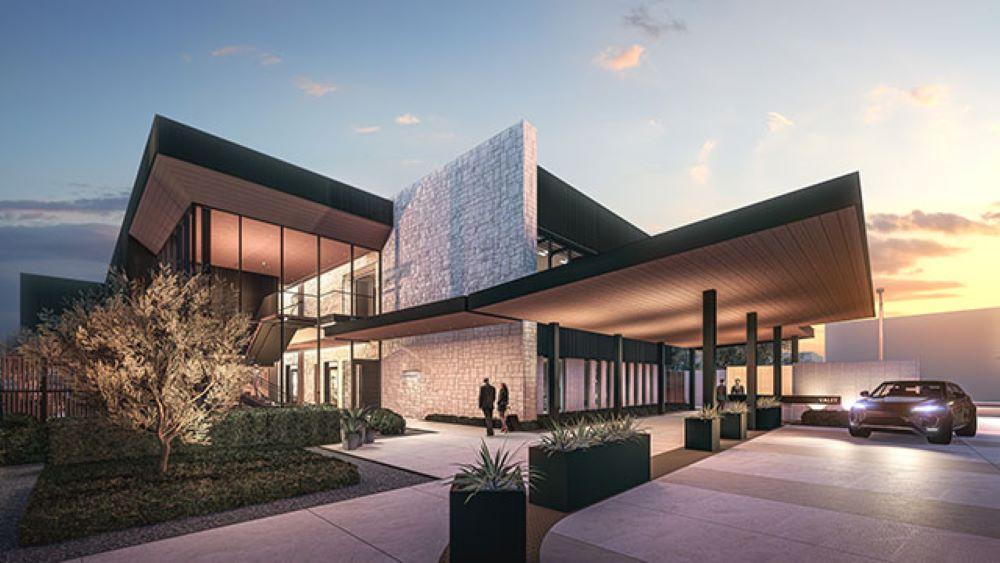
A rendering of Clay Lacy’s FBO redevelopment at John Wayne Airport.
Overair has partnered with Clay Lacy Aviation to introduce advanced air mobility (AAM) services in Southern California, marking the latest in a wave of similar announcements that have seen air taxi startups partner with fixed-base operators (FBO).
The collaboration will see Overair and Clay Lacy work to develop a concept of operations for the Butterfly, the five-passenger tiltrotor electric vertical-takeoff-and-landing (eVTOL) vehicle, which is targeting entry-into-service in 2028.
An Overair spokesperson said the agreement will facilitate planned charging infrastructure for electric aircraft at Clay Lacy’s FBO terminals at John Wayne Airport in Orange County and Van Nuys Airports in Los Angeles, while exploring “strategic establishment” of additional vertiports in the region.
The joint effort will see Clay Lacy focus on development of charging infrastructure and aircraft operation logistics, while Overair will concentrate on aircraft integration, maintenance, certification, vertiport software integration, flightpath planning and public awareness, the companies said.
Speaking to the AAM Report, Scott Cutshall, Clay Lacy’s senior VP for development and sustainability, said he believes FBOs have a large role to play in bringing about the early adoption of AAM services, although over time he expects attention to shift to larger vertiport complexes at airports and urban areas as mass adoption picks up steam.
“We believe that the early adopters will be people who are using general aviation already, not necessarily commercial air travelers,” Cutshall says. “As more aircraft come into the market and businesses start to scale, our belief is that a lot of airports will develop eVTOL infrastructure in conjunction with their commercial terminals, rental car offerings, parking garages, etc.
“So if people are coming from the airport, they’re more likely to use the vertiport that’s commingled with commercial service and not FBOs, because the vast majority of FBOs are not large enough to handle high-volume eVTOL traffic,” Cutshall says. “The role of the FBO, as we see it, is to encourage early adoption with our current customers. As the industry grows, the concept will be proved out to the point where commercial airports start to adopt it as part of their infrastructure plans.”
While the smaller footprint of FBOs will limit their ability to scale up to accommodate high-volume air taxi operations, it also allows them to be more agile in the early stages of adoption, as opposed to large commercial airports that will require much more planning and investment to build out the necessary infrastructure for AAM.
“FBOs are key to starting the industry. If we don’t put in the infrastructure, it’s going to take years for the large airports to plan an integrated vertiport structure in the same facilities as their commercial activities,” he says. “In the meantime, FBOs can start some movement of passengers at low levels. Once that happens, airport planners will take notice.”
The announcement between Overair and Clay Lacy was the latest in a series of similar tie-ups between eVTOL startups and FBOs. Atlantic Aviation, which operates more than 100 FBOs across the U.S., has announced agreements with Archer, Beta Technologies and Joby to electrify its facilities on the East, West and Gulf Coasts, including important launch markets in California and New York City.
Joby and Clay Lacy also announced a partnership earlier in January to install electric aircraft charging equipment at its FBOs in Southern California.





